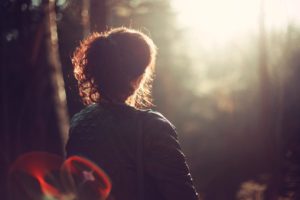 I recently had the honor of being on a panel of body-centered therapists following the reading of a play by Dayle Ann Hunt titled The Trauma Brain Project.
I recently had the honor of being on a panel of body-centered therapists following the reading of a play by Dayle Ann Hunt titled The Trauma Brain Project.
This play is powerful, moving, intense. It is the story of a woman’s journey to heal from the repressed memories of early childhood sexual abuse. Dayle takes us on this journey of her own life experience as someone who was diagnosed with Epilepsy as a child, who was also experiencing paralyzing migraines, unexplained nausea, psoriasis, sinus growths and a string of inexplicable conditions that followed her throughout her life; all of which led her (in her 50s) to shadowed memories of what had happened and to eventual healing with somatic therapy.

The cast is amazing. The direction is expert. We the audience were riveted for the duration of the piece.
This play is a must-see for anyone who works with diagnosing illness. Dayle Ann is passionate about medical professionals, therapists, and trauma survivors knowing that their symptoms may be trauma-related. The body and mind do actually influence each other.

If you’re interested in this topic and have any ideas on how this play can be more widely disseminated, please contact D
ayle Ann at www.thetraumabrainproject.com
After the play I led the audience through a few basic exercises to help with regulation since watching anything traumatic can have an impact on our bodies. And it struck home to me again tonight that we are being inundated daily with news of traumatic events. This doesn’t mean we are all traumatized by this, but we are more than likely affected. So I thought I’d quickly share one of the techniques that I shared with the audience in the hopes that you might be able to use it in your day-to-day. It’s called 3-2-1
- Look around and notice and briefly describe (e.g. “orange mouse pad”) three (3) things you see
- Now listen and name two (2) sounds you hear
- And now notice one (1) thing you’re feeling with your sense of touch.
 How are you feeling now? You can repeat that sequence one more time if you’re feeling a little more focused or settled than you were before you started.
How are you feeling now? You can repeat that sequence one more time if you’re feeling a little more focused or settled than you were before you started.
Namaste.